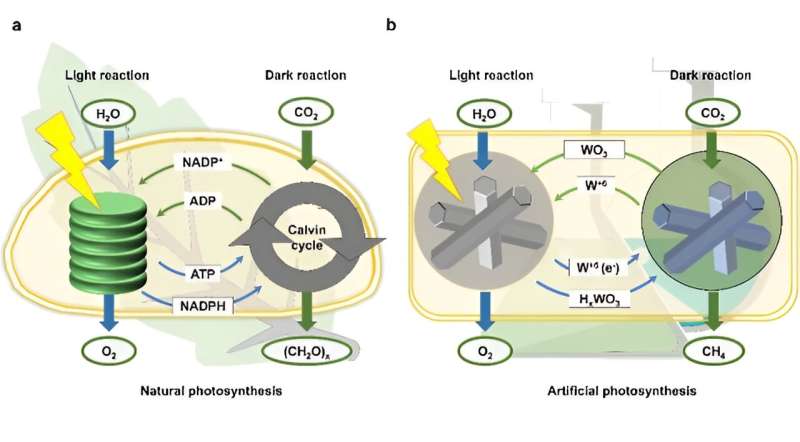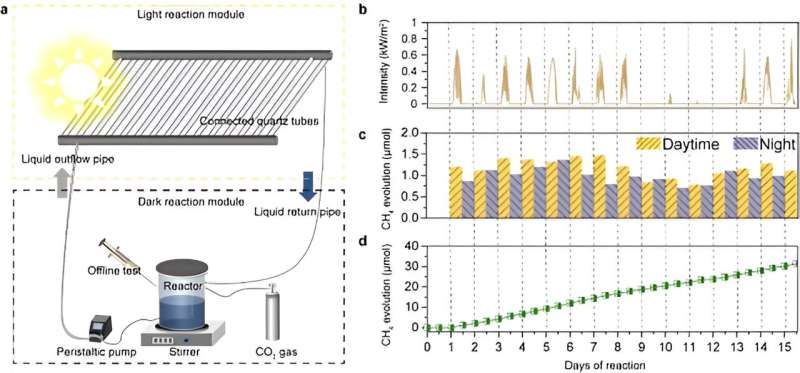This article has been reviewed according to Science X's editorial process and policies. Editors have highlighted the following attributes while ensuring the content's credibility:
fact-checked
trusted source
proofread
All-weather solar-powered CO₂ utilization achieved by mimicking natural photosynthesis

In a study published in National Science Review, researchers from the Institute of Earth Environment of the Chinese Academy of Sciences (CAS), together with collaborators, have used the charge storage mechanism of tungsten-based nanomaterials for all-weather carbon dioxide (CO2) conversion.
The development of CO2 conversion technology into valuable products is a great opportunity for the coordinated development of China's economy and ecological environment, which is a typical negentropy process that demands a substantial input of energy. However, the dependence of the solar-powered CO2 conversion process on sunlight illumination is a limiting factor for its real-world implementation, given the intermittent availability of solar irradiance at night and on cloudy or rainy days.
In addition, there is a mismatch between the availability of solar energy and the demand for its use, influenced by variations in daylight hours and meteorological conditions. Therefore, the development of a strategy that decouples CO2 reduction from the constraints of solar energy availability is critical to achieving continuous, all-weather CO2 conversion.
In this study, the researchers developed a novel model material, Pt-loaded hexagonal tungsten trioxide (Pt/h-WO3), to decouple light and dark reaction processes by mimicking natural photosynthesis.
The unique properties of the WO3 carrier, including its ability to switch between valence states (W6+/W5+) and its tunnel structures, combined with Pt's ability to split water and transfer hydrogen atoms to the h-WO3 surface, are key to achieving the decoupling of light and dark reactions for CO2 conversion.

When exposed to simulated sunlight for 10 minutes, the catalyst demonstrated its ability to sustain the conversion of CO2 to methane (CH4) even in the dark, marking the first instance of a single material achieving uninterrupted CO2 conversion under all-condition.
Building on the properties of this material, the researchers also constructed an outdoor test facility and conducted a 15-day continuous natural light test. The data collected from the outdoor test facility showed that the CO2 reduction process could continue at night and during rainy periods, demonstrating successful all-weather CO2 conversion using a renewable approach.
This research approach has the potential to overcome critical technological bottlenecks in achieving continuous solar CO2 utilization.
More information: Xianjin Shi et al, Sustainable all-weather CO2 utilization by mimicking natural photosynthesis in a single material, National Science Review (2023). DOI: 10.1093/nsr/nwad275
Provided by Chinese Academy of Sciences





















